Dan Clark Audio Expanse Summit-Fi Headphones – Enter The Driver Bliss
Dan Clark Audio Expanse is a $3999 USD pair of high-end flagship headphones designed around Dan Clark Audio’s all-new 4th generation of planar magnetic drivers and the company’s breakthrough in Acoustic Metamaterial Tuning system, delivering a stunning presentation and depth. Today we will review the new DCA Expanse and compare them with a selection of other flagships including Audeze LCD-5 (4500 USD), Rosson RAD-0 (2600 USD), HIFIMAN HE1000SE (1999 USD), Crosszone CZ-1 (2000 USD), and Sivga Peacock (1500 USD). As Dan Clark Audio Expanse is a rather hard to drive planar magnetic headphone, we will also explore pairings with select flagship headphone amplifiers including HIFIMAN Prelude (2499 USD), iBasso PB5 (1499 USD), Dethonray Listening M1 (2599 USD) and Feliks Audio Euforia Evo (2991 USD).

Introduction
Dan Clark Audio or DCA or DC Audio is one of the world’s most popular headphone designers and manufacturers, being a driving force behind new driver tech development, and has been in business since 2012 when the company was founded as Mr. Speakers by Mr. Dan Clark. The initial driving force behind the development of the new Mrspeakers Headphones was to create a closed-back headphone that sounds as open as possible, which led the the creation of the Alpha Dog, a fun and well-received headphone. Following the success of the Alpha Dog, Mr. Speakers funded the design and creation of the Ether, as Mr. Speakers became one of the leading manufacturers of Planar Magnetic Headphones. In 2019 the company rebranded to Dan Clark Audio and today they are an industry leader, having secured six patents for the technologies they developed and discovered, placing an emphasis on both sonic performance and value, having the epic “Made In USA” Quality Dan Clark Audio is known for. As an Amazon Influencer, I earn from qualifying purchases, and using the purchase links in my reviews helps me maintain this website and Youtube Channel. Huge thanks to Dan Clark Audio for providing the sample for this review, in exchange for my honest opinion.
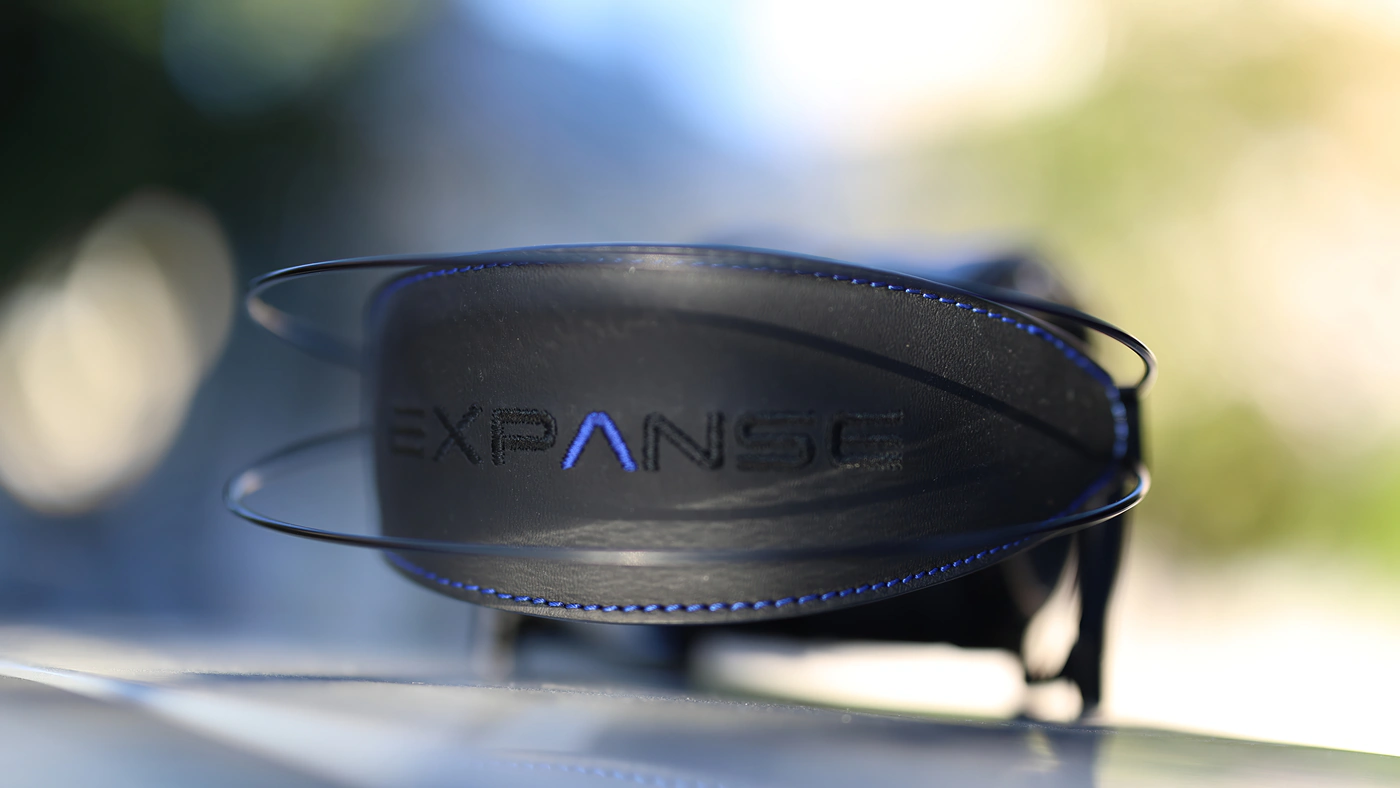
PROs – Superb rendering of each instrument, music style and voice, both male and female. Smooth, rich and luscious textures with a satisfying bass hit, without sacrificing on speed. Ultimate resolution and good wearing comfort makes the Expanse an end-game material headphone, it could be the last headphone you need, and still have a great value.
Cons – Slightly high clamping force, proprietary connectors for aftermarket cables.
Product Link
Official store Link – https://danclarkaudio.com/expanse.html
Build Quality/Aesthetics/Fit/Comfort
Expanse is currently Dan Clark Audio’s flagship open-back headphone, setting a new standard in musicality, soundstage and detail retrieval but also in comfort. The new Acoustic Metamaterial Tuning System or AMTS is a DCA Patent Pending inline device located between the headphone driver and the ear. This is a complex acoustic device that integrates waveguides, diffusion control, quarter wave and helmholtz resonators, into one compact structure to eliminate standing waves, dramatically improving the sonic performance of the driver. While this won’t magically fix a bad recording, the diffusion elements will reduce standing wave formation, while the resonators act as precision and broadband filters to smoothen out and shape the frequency response from the mids to the high frequencies.
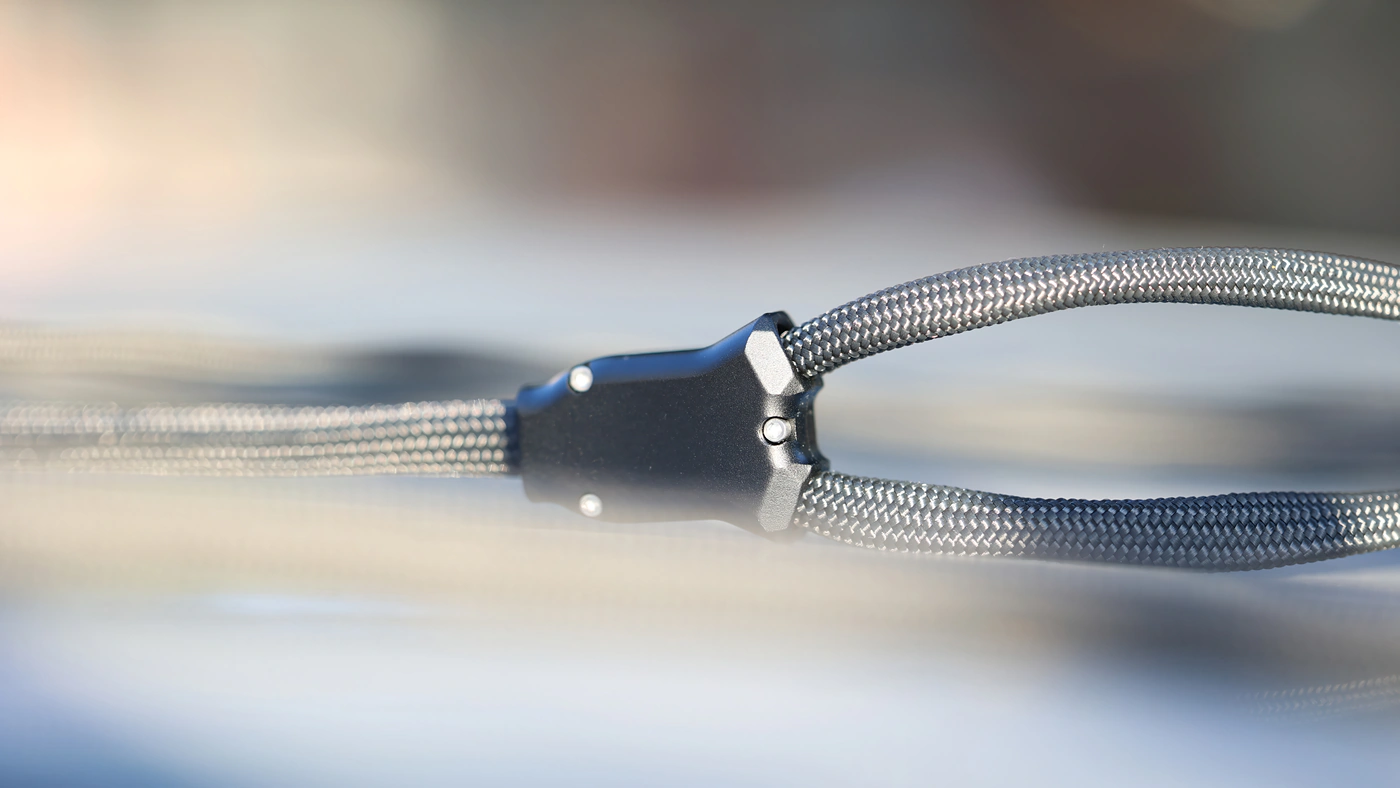
To complement the acoustic developments, Dan Clark Audio integrates the 3th generation motor planar magnetic drivers with incredibly low distortion levels to deliver detail levels typically found in electrostatic headphones. The headphone cups design takes cues from the Stealth headphones, adding an exciting and unique grill based on the mathematical functions derived from the principles of generative design, while the leather headband is made of black leather and features fine blue stitching to create a quilted head-strap that is comfortable.
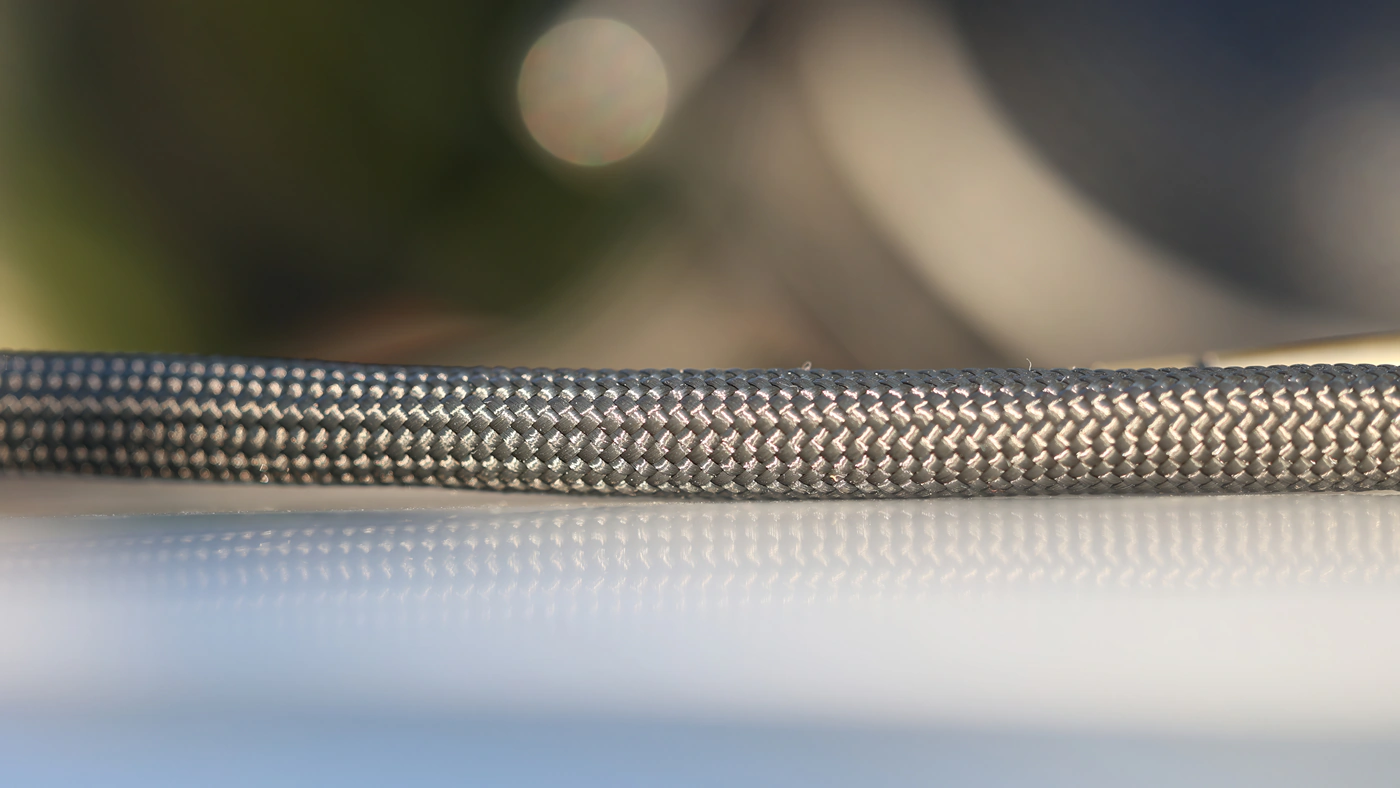
For better comfort, the headphone support mechanism is not metalli and stable, but Expanse relies on a self-adjusting suspension mechanism, which will sit the headphones just right on your head. The weight of the Expanse is just 418 grams, making it one of the lightest headphones on the market, and together with the new vegan suede and leather ear pads, the headphone promises to offer one of the most comfortable listening experiences out there. To complement the unique design, DCA also incorporated Aeon 2’s elegant folding gimbal structure, allowing you to conveniently pack the Expanse in a case that’s small and easy to stow away.
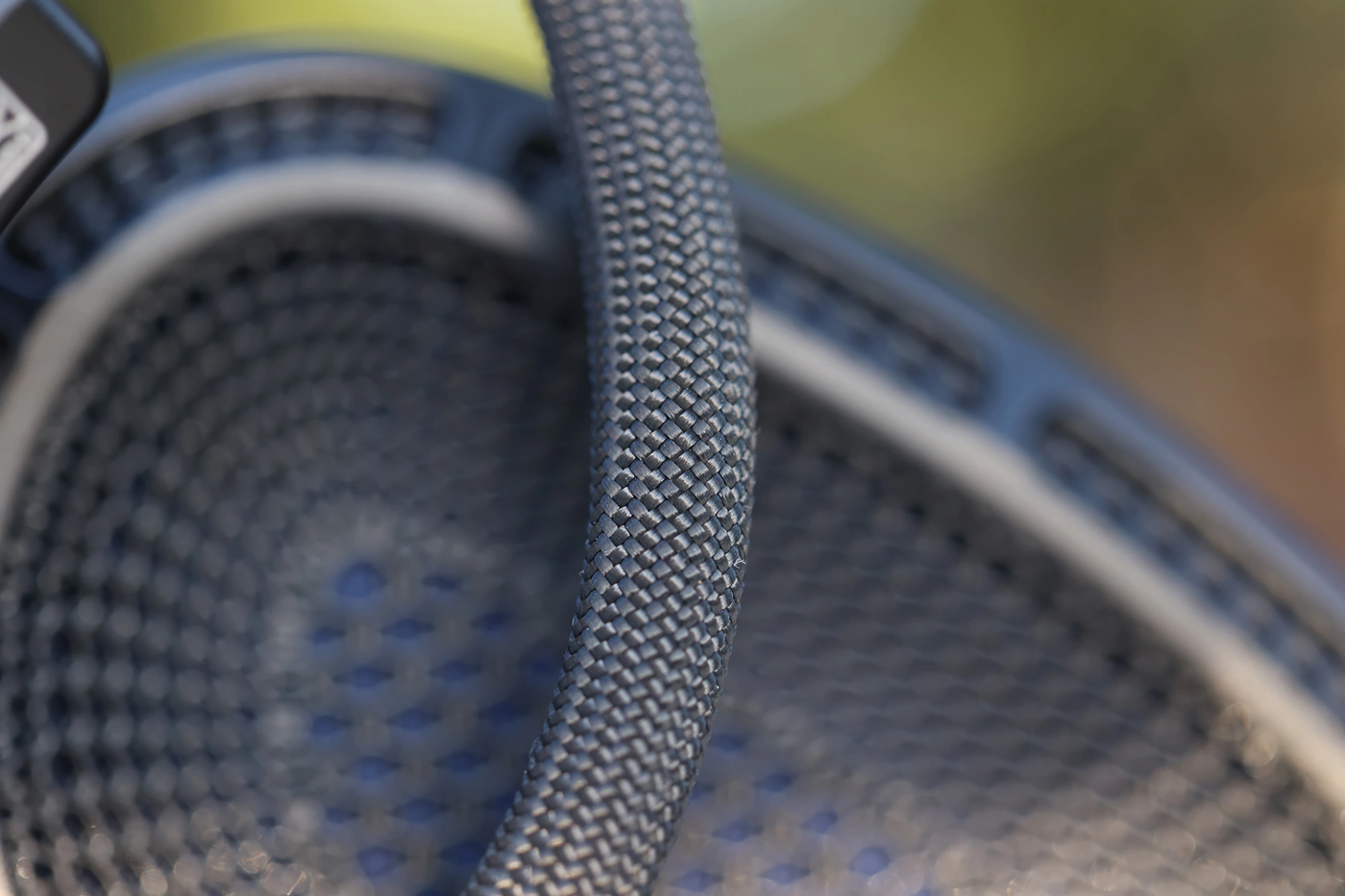
The driver is built using a new tensioning system that creates better consistency across units, and the driver has FEA and CFD optimized motor structure for higher motor-force uniformity and a smoother acoustic flow. Expanse designed and built by hand in San Diego California, back by both excellent support and built quality. DCA offers us transparency, and inside the Expanse we can find three patented technologies, with Patent 10178459 for multi-layer damping material, Patent D855579 for the tear-drop headphone design and the hingeless headband, and Patent 17849432 for the Inline Acoustic MetaMaterial tuning system.

On a more technical level, Expanse has a huge driver with a 76mm x 51mm single-nded planar magnetic driver, and the drivers have a matching of 0.25dB weighted at 20-10.000 Hz, with a THD of less than 0.03% between 20 Hz – 20 kHz ref. 1kHz at 94dB. The headband is made of Nickel and Titanium, the baffle is made of carbon fiber, and inside the case you will find the headphones, a Transport Case, A Vivo Cable, Manual and a Certificate of Authenticity.
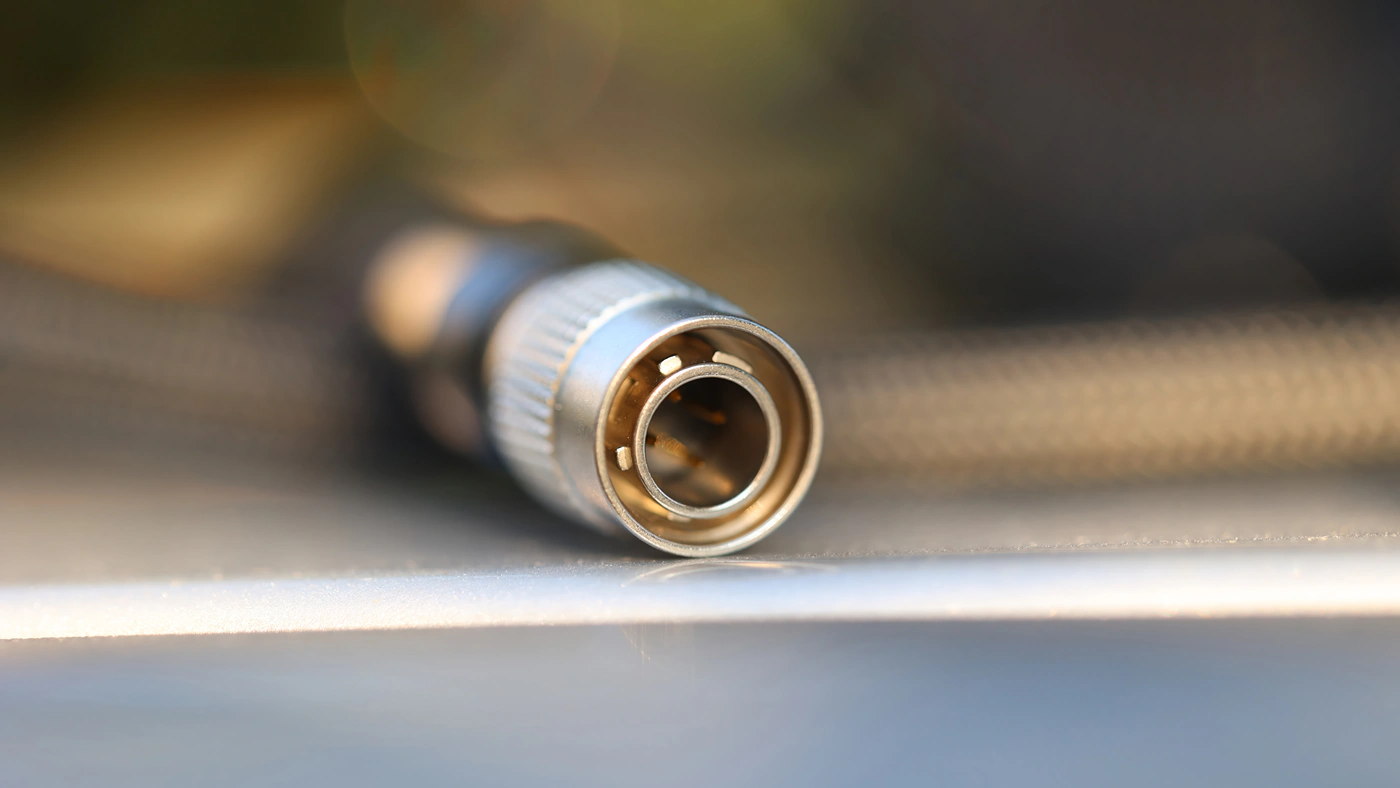
On a subjective level, the Expanse is one of the best made headphones I have ever had, not a single creak or handling noise while using it. The connectors are the Dan Clark Audio connectors, so any aftermarket cables need to either be made for them, or if you want to be dandy, you can grab an audio cable that ends in 3.5mm connectors and use adapter pigtails, like the ones made by Lavricables to expand on the number of headphones that can use them. The wearing comfort of the DCA Expanse is excellent, they do not isolate much from the outside noise, but it is enough to cut out the noise of my computer’s fans while at idle, and I can’t really hear my air conditioning either while wearing the Expanse. This being said, the music I am listening to is audible in the room, and especially when listening at loud volumes, it can be distracting for my wife if she’s working on something.
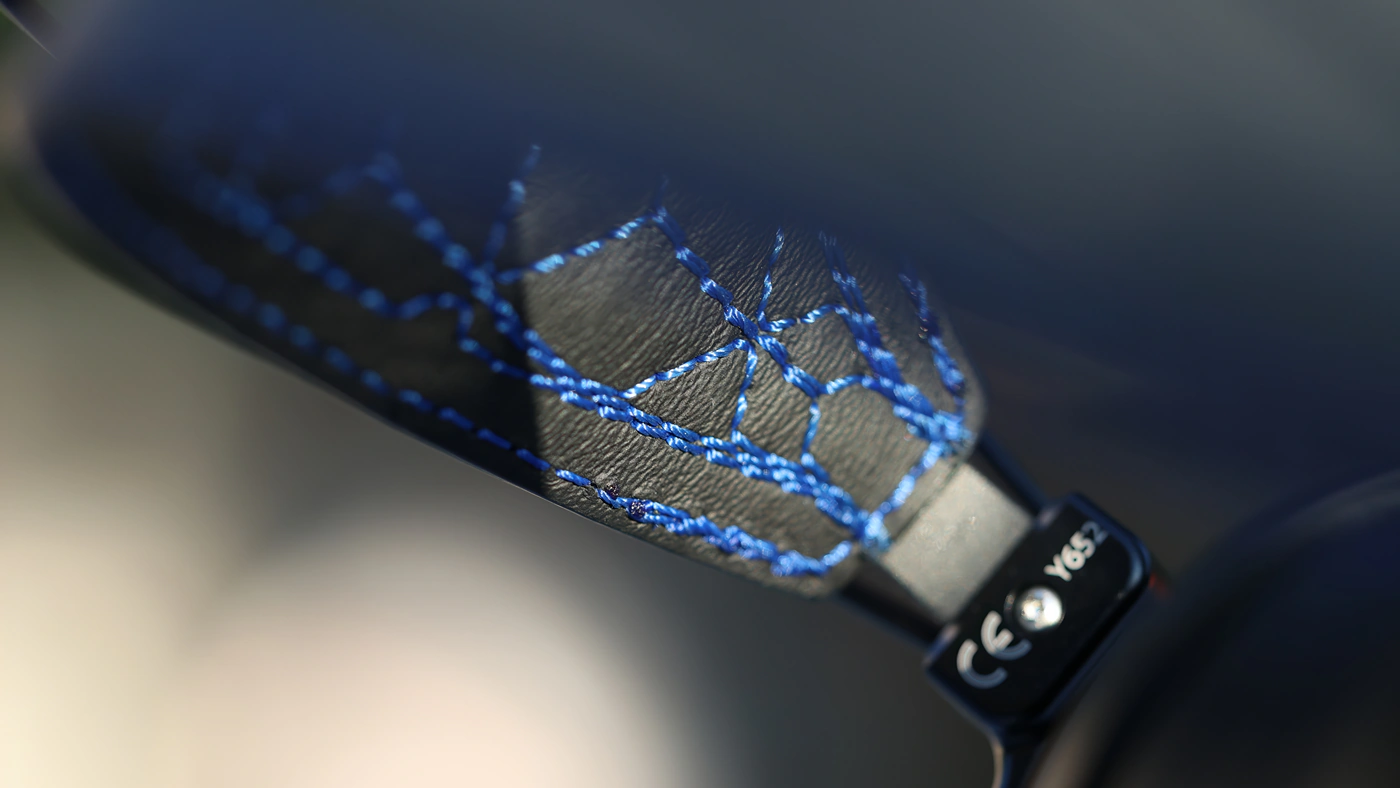
Regarding the comfort, the self-adjusting headband works fairly well, it has a fair tension, being on the slightly tighter side, but not enough to cause discomfort. The earpads are large, have more than enough space inside for my ears, and they seem to be using a thick, dense sponge that gives them a satisfying volume, while the clamping force is on the tighter side, as it keeps the Dan Clark Audio expanse secure on my head. With most cables you will not hear any kind of microphonic noise, the headphones are good at canceling it, and there is no noticeable driver flex if touching or moving the Expanse on my head.
Sound Quality
Pairings – One of the aspects of owning high-end flagship headphones people seem to struggle the most with is driving them correctly and providing them with enough power to sound good, and while Expanse is rather hard to drive and get loud, it will sound excellent even with entry-level amplifiers or DAc/AMPs provided they have enough power. Naturally, Expanse scales a lot with high-resolution amplifiers and there’s a lot of performance you can squeeze out of them. Pairing is just excellent with both tube Amps and Solid State AMPs, and Expanse has a transparent tuning so it will make great combos with everything out there. For this review, I have used iBasso D16, HIFIMAN Serenade, Dethonray Listening M1, and Musician Pegasus R2R as the DACs. For the Amplification, I have used Feliks Audio Euforia Evo, Singxer SA-1 V2, Sparkos Gemini, Aune Audio S17 PRO, HIFIMAN Prelude, Dethonray Listening M1, iBasso PB5, HIFIMAN EF600 and HIFIMAN E400. Expanse is driven properly out of all those DAC / AMPs, although I found that you can stretch the budget in the low-end if using a Topping D50 III DAC and a Topping A50 III AMP if you want to stay light on the source side. I have used the LavriCables Grand Line cable to take advantage of the balanced outputs of those amplifiers.

Overall Signature – Dan Clark Audio Expanse delivers a sound that is powerful, dynamic and punchy, colorful and contrasty with excellent resolution and detail, but much more tame and smoother, more detailed and a bit more forgiving than the Aeon 2 Noire that I reviewed in the past, creating a new house sound for Dan Clark Audio, and although the bass is full and voracious in impact, it is fast, controlled and offers nuance to each instrument, along with body and presence. The midrange is sweet, vivid, and fairly forward, brining the voices of the lead instrument forward, while creating a realistic soundstage that defines the space for each instrument really well, all topped by a natural, slightly wet treble that gives music resolution, shine and sparkle all while keeping the texture natural and clean. The tuning is versatile, a bit on the forward punchy side with smooth textures, creating what I consider to be an end-game sound that can be enjoyed with any music, from deep-reverberating EDM to rock, classical, metal and Jazz.
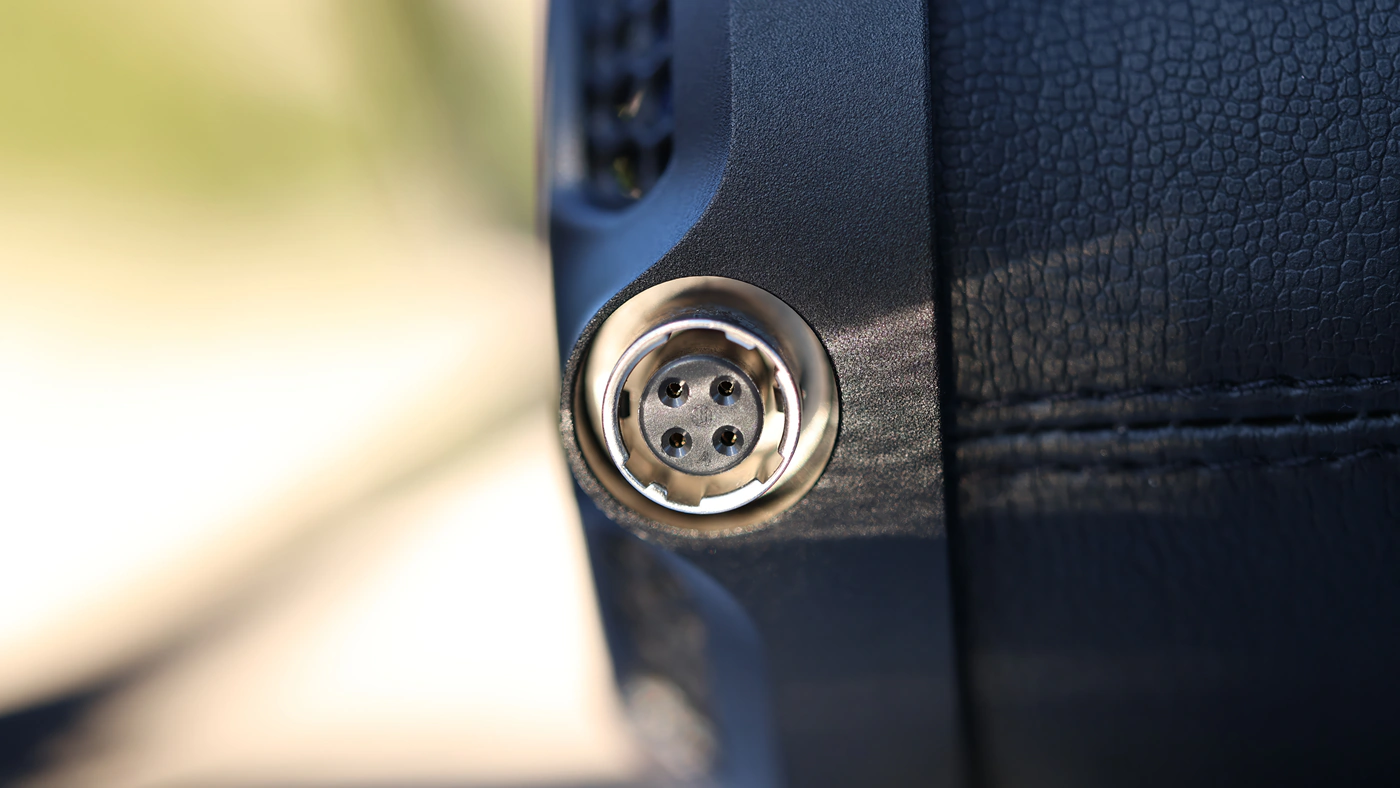
Bass – You can always start a good review with a bassy song, and I’ve been digging the deep-reaching bass of the Expanse a lot, as it is a headphone that can act with force, deliver an overwhelming blow and create true body and earthquake-levels of rumble in your head, but only with bassy music, showing what I can only describe as perfect transparency. The bass has zero coloration, there’s no favoritism for upper or lower bass, and Expanse allows the song to shine through for what it has recorded, what’s already present in the lows and to shine through with a quick speed and satisfying decay for each note. A good example is exploring the new song from Dakku – Aura, where I can literally feel the earth moving with me as the bass of the song hits, and what’s most surprising with the expanse is the total lack of distortion, and perfect control, outstanding resolution and audibly non-existent THD even if pushed at 120 dB at the ear level. Another song that shows a truly deep impact is BPM15Q – Rad Rad, but here the bass has a much faster, more fluid character than in Dakku’s Aura, each song has its own resonance of the bass as Expanse seems capable to reproduce the bass with accuracy and transparency and not color it in its own resonance point. There’s a satisfying sloppy end to each strong bass note and drum hit, which gives music the feeling of realism and depth.
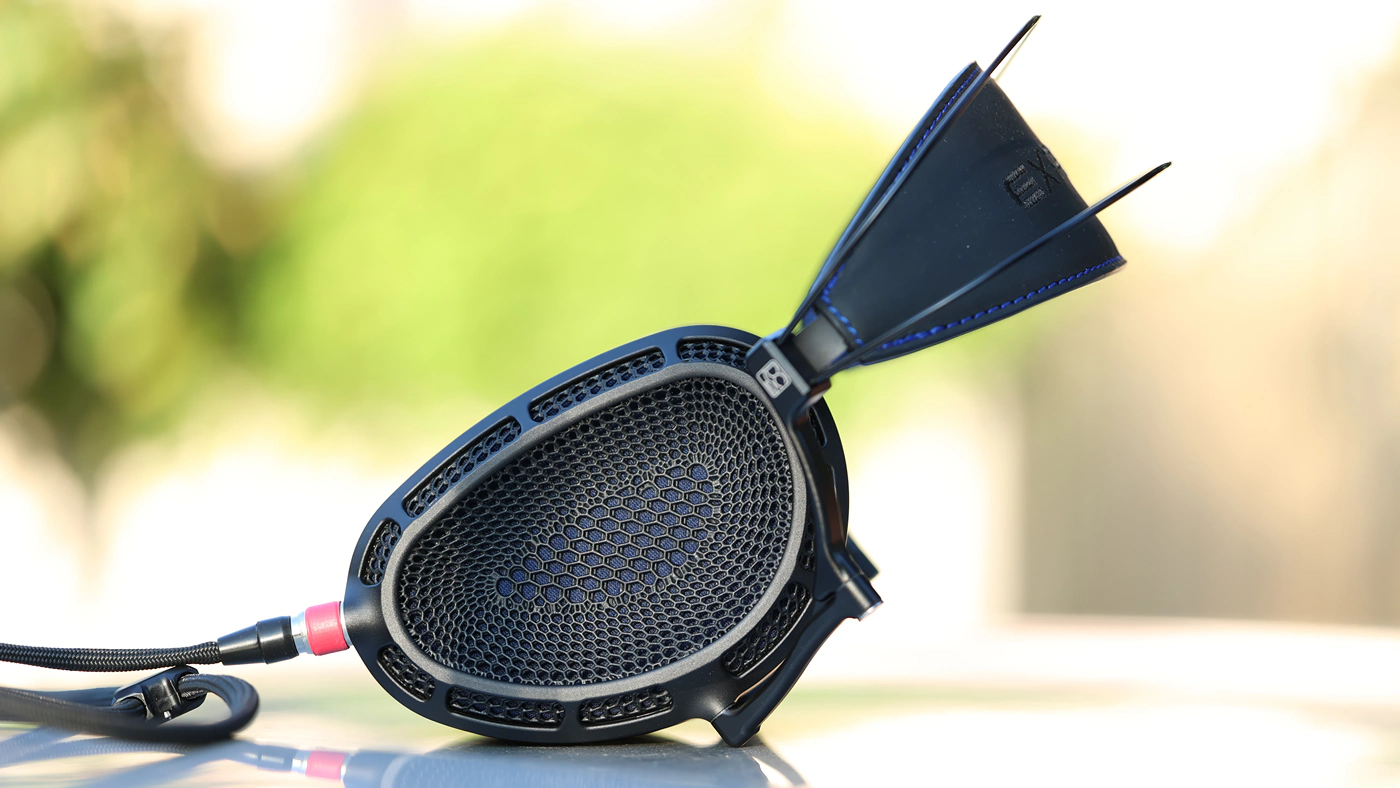
Midrange – The midrange of the Expanse is vivid, colorful and holographic, with a really sweet tonality for female voices as it gives a true-to-life resonance to both Kyoresu’s voice but also Futakuchi Mana and Hime hina too. For the first time in ages I’m able to actually explore cavernous parts of my music library that I typically don’t venture in, with artists like Shakira and even Dua Lipa having a really beautiful voicing, a smooth, fluid texture with no fatiguing resonance points, but with excellent resolution for the instrumental part and with a spacious staging presented behind the lead instruments. At the other end of the spectrum, male voices are deep, powerful and bear the same smooth, luscious texture that female voices have, even technical death metal screams being utterly enjoyable and musical as presented by the expanse, with even the harshest death metal having smoother and groovier riffs. The deep bass keeps the backbone strong, giving all music a groovy beat and well-defined body to each instrument, with a rich and lush presentation even for synths and square waves.
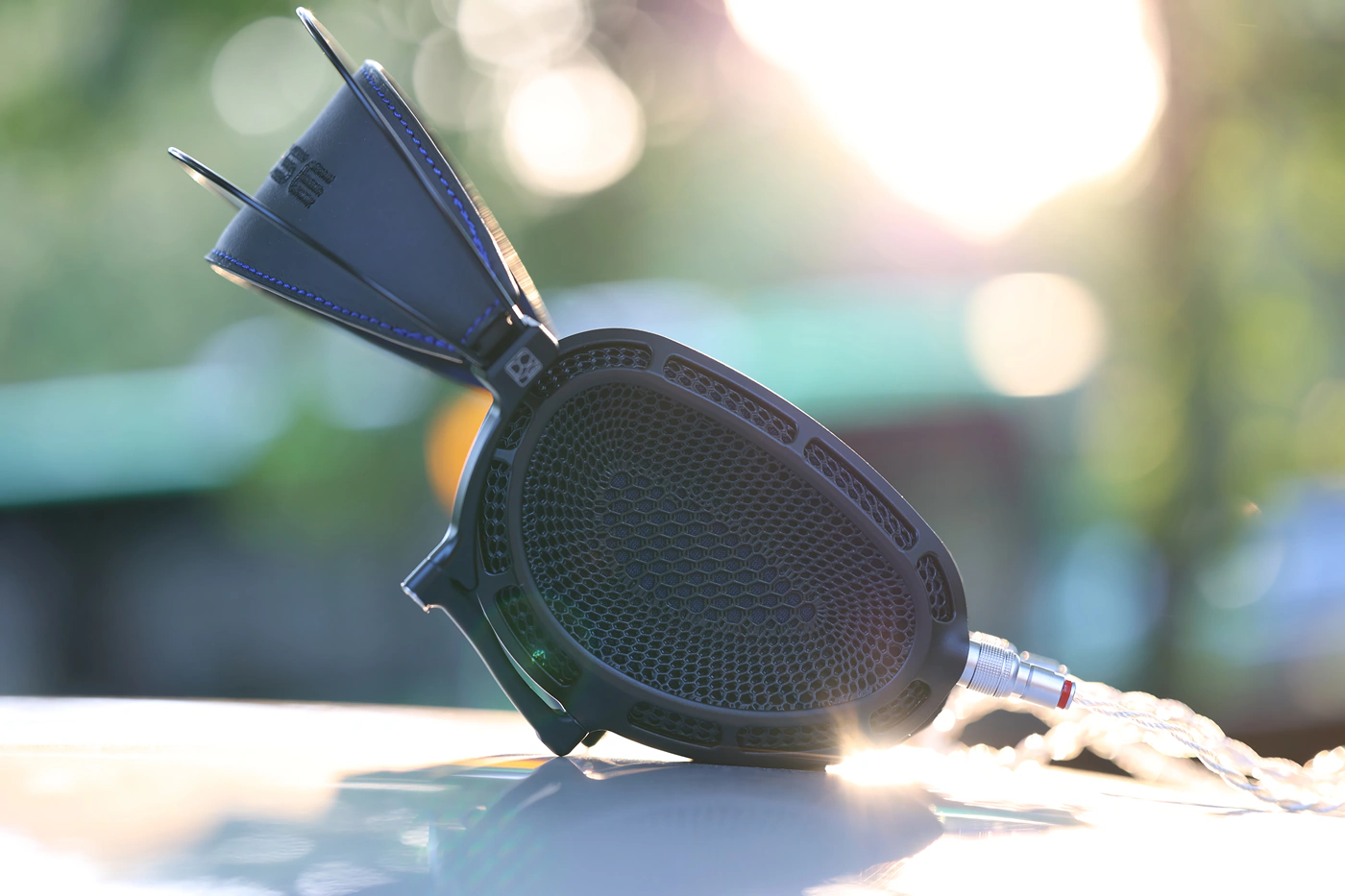
Treble – As Dan Clark Audio promised, the treble delivered by the Expanse is on a new level of smoothness and control compared to all the other headphones the company designed so far. This doesn’t mean they sacrifice in any way on the extension and air, and quite on the contrary, DCA Expanse sounds airy, brilliant and sharp, with a full extension and width, excellent dynamics and impact, but keeps the treble under control with not a single trace of metallic or harsh, but a well-defined, airy and silky-smooth-textured treble that allows you to both pump the volume and enjoy parts of your music library that you previously found fatiguing, harsh or shrill. DCA Expanse will not add bass nor remaster your library, but it allows music to shine with true resolution, detail and clarity without imposing a bright tuning on you. While Expanse sounds open, the overall tuning is as natural and transparent as it gets, allowing each song to present its own unique and personal character. There’s brightly tuned and recorded music, smooth music and Expense presents each as they are and as they come, allowing them to shine.
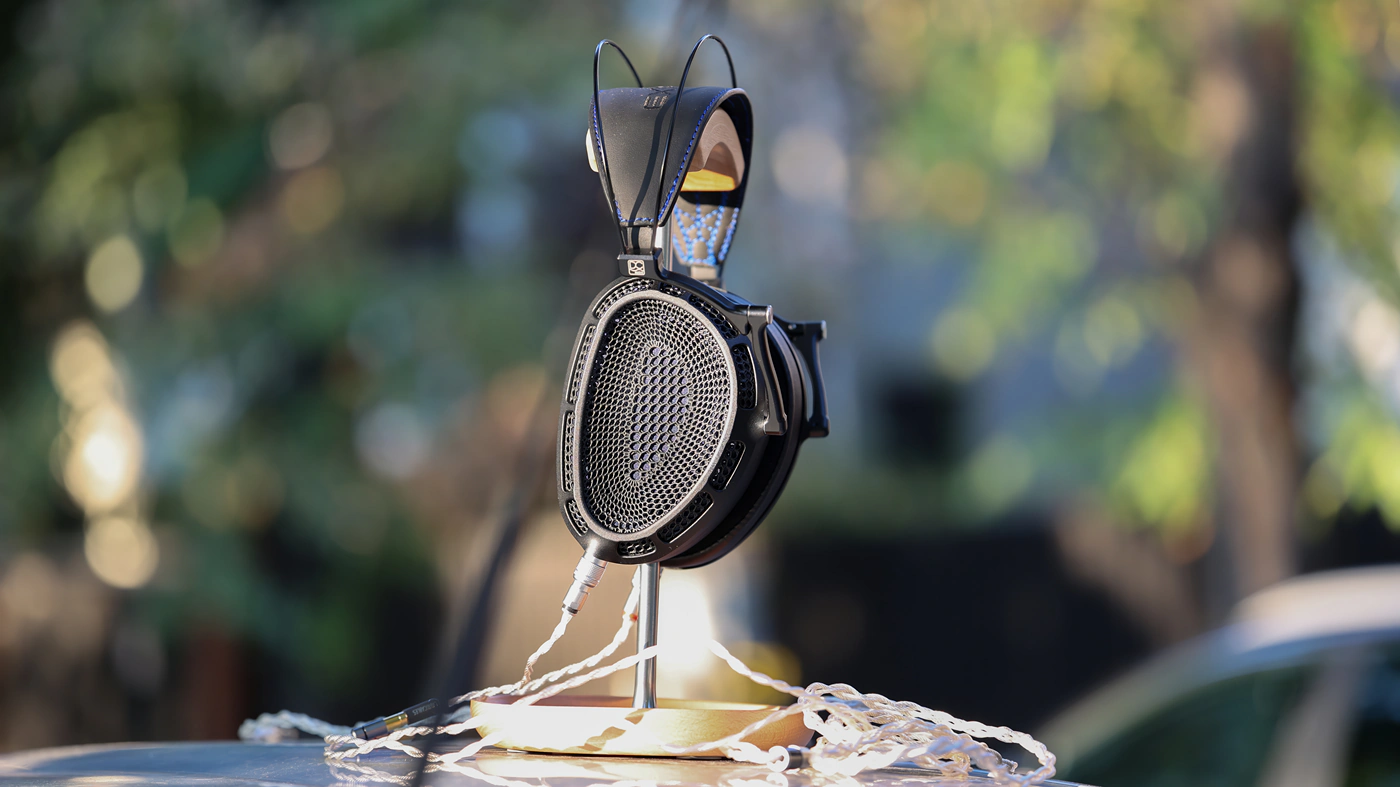
Dynamics / PRaT / Textures – Dan Clark Audio really delivers a truly unique presentation here, the texture is rich, smooth and lush, and Expanse has a certain sloppy end to each bass impact without affecting the bass speed. The AMTS diffuser / acoustic control unit really delivers perfection for all instruments and a sonic bliss unheard before, with a really satisfying sound for each song, allowing me to press play after play through my entire music collection without a trace of fatigue or regret. The dynamic range is insane, there’s a huge difference between the loud forward instrument or voice, and the smooth, quiet background guitars in rap or classic rock, and the sound is vivid, colorful and dynamic. The maximum speed of the sound is natural-fast, the slightly wet and smooth character of the sound means it is never dry.

Loudness Saturation Gradient – Volume Control does not quite explain what a loudness saturation gradient is, and what we explore it, so Expanse is the first headphone with the new dominator which serves the same purpose. Expanse has a perfect volume control and saturation gradient, they sound as dynamic, vivid and punchy regardless of the volume, but most sources might struggle to have as linear of a saturation gradient and with the vast majority of sources, the sound becomes more punchy, more colorful and more dynamic at higher volumes. Although on paper the THD numbers seem conservative, Expanse has almost the lowest audible THD at 120 dB that I ever heard, both the driver assembly and the driver itself is very well controlled, and even if you play a little concert right between your ears, you will hear no audible increase in distortion, and Expanse sounds end-game in this aspect, they handle high volume better than most competitors, while offering the same level of dynamic range and punch, control and resolution at low volumes too. To put it into perspective, I am at maximum volume on iBasso PB5 and D16, high gain on both, and the sound has no audible distortion, but it is reaching around 120 dB, so Expanse needs quite a bit of power to really get loud.
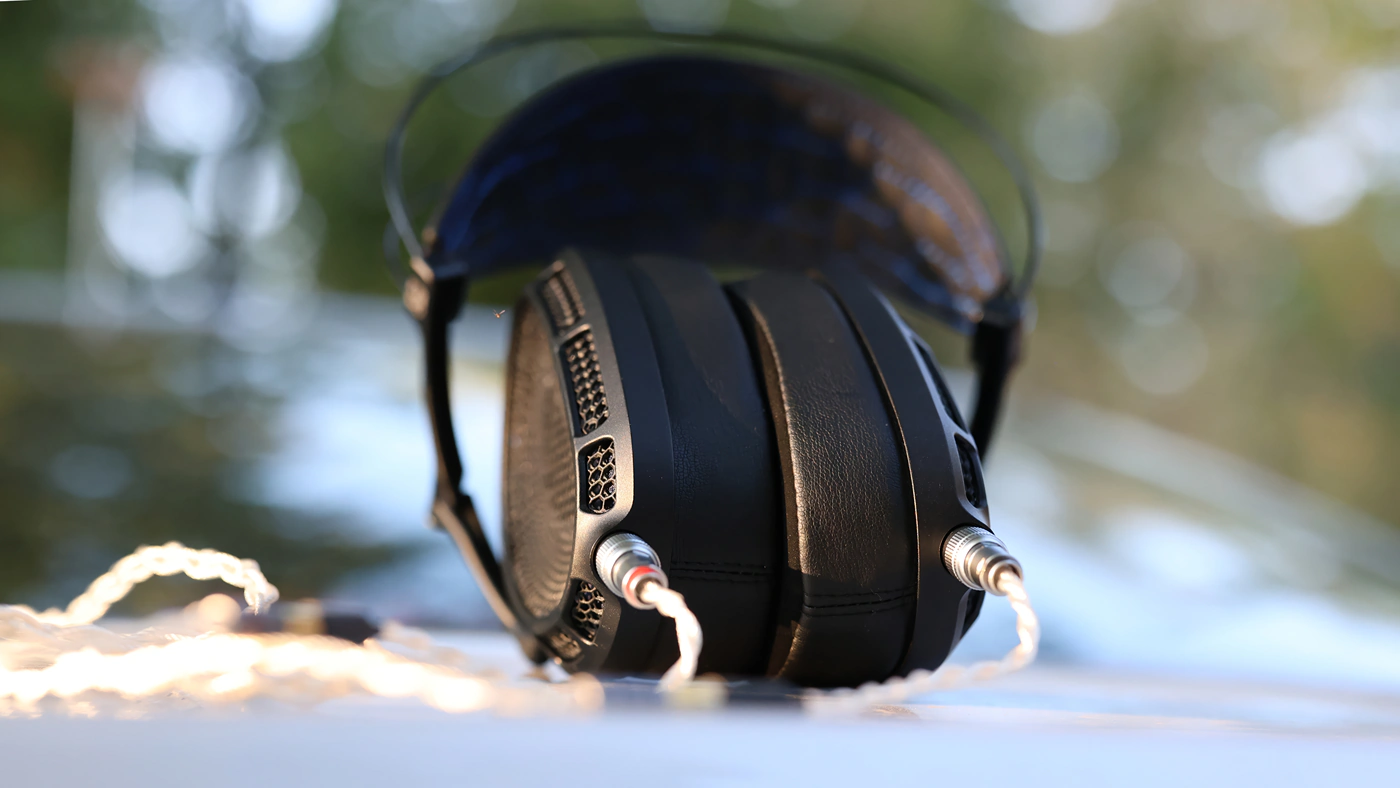
Soundstage – As Dan Clark Audio remarks on their official description of the expanse, the headphones sound realistic, each instrument has a natural body, presence and it doesn’t feel like a punctiform source of sound, each instrument has size, in songs from Metallica, the guitars sound big and encompass an entire space creating one of the most realistic live presentation of songs like the cover Mercyful Fate. Stereo imaging is perfect, while the directionality of the sound is perfect, although this wide, natural presentation takes the crown above directionality. Instrument separation is top-notch, with a perfect definition of each instrument, thanks to both the well defined body, excellent resolution and strong rendering of how big and large each instrument is. The whole sound has such transparency that you can quickly switch between Metallica and Zomboy without being bothered by the differences in recording, mixing and mastering. Expanse just renders beautifully.
Gaming
If you don’t mind spending the cost Expanse asks for, some gaming soundtracks actually have more orchestral composition and provide a better ASMR Feedback / experience than many movies and even music, for example Genshin Impact. With Visual Novels, and voice acting, Expanse really brings out the emotion and color in female voices, sweetly played guitars and slower drums, while also rendering the groovy basslines with a lush level of bass and warmth.
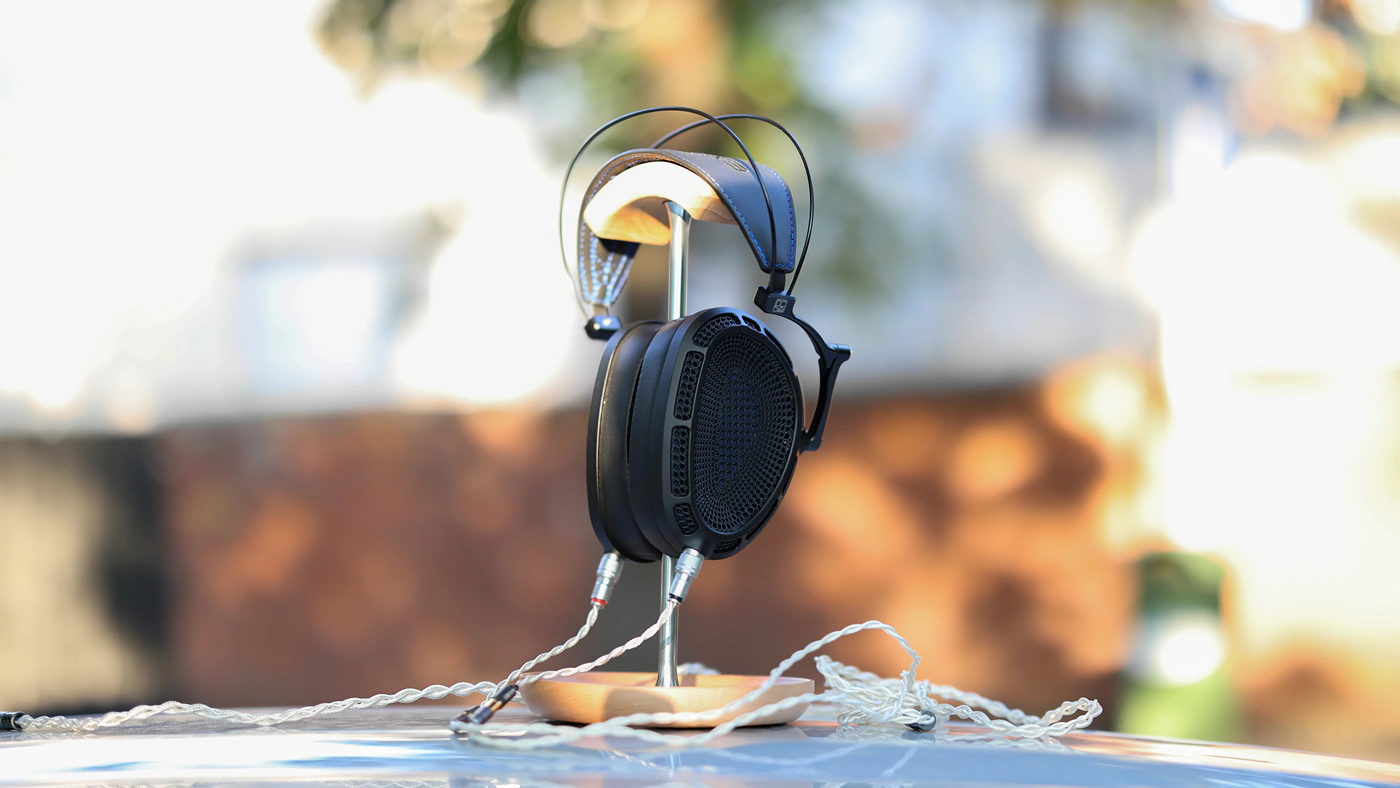
For shooters and more aggressive games, Expanse keeps up nicely thanks to their dynamic, punchy sound and natural-fast driver response, creating a transparent, precise and spatially correct sound that reveals spatial information really easily. You know where something is coming from, what that thing is and with what speed it is approaching, thanks to the high dynamic range. The sound is also never harsh or fatiguing, so you can keep the Expanse on your head for countless hours of gameplay, although as they require quite a bit of power to be driven well, you need a good matching DAC AMP too.
Comparisons
Dan Clark Audio Expanse vs Crosszone CZ-1 (3999 USD vs 2000 USD)
Build – Both headphones are constructed with quality in mind, but CZ-1 has a much weaker clamping force, which can both feel comfortable but also lead to a less secure fit compared to the Expanse. Both headphones are hard to drive, and require a bit of extra push, but DCA Expanse is far easier to match with most sources, being an excellent combination with almost any DAC or DAC/AMP, while CZ-1 is easier to drive from a power requirement perspective, but is much harder to match and actually resonate with most sources. As both Headphones have proprietary connectors, this aspect is a tie, but Expanse can easily be packed for transport and comes with a beautiful transport case while CZ-1 can neither be packed nor comes with a transport case. Although CZ-1 is semi open and Expanse is fully open, the maximum leakage and passive noise isolation is very comparable.
Sound – Sonically, the two headphones are very different, with CZ-1 sounding gentle but natural, prioritizing a sharp and acute midrange, with a bright and open treble and having very little impact, while Expanse sounds far more powerful, with a harder impact, more body to each instrument and a smoother treble. The soundstage aspect is very different as Expanse creates a certain feeling of realism for all instruments, gives each instrument a really natural presence, recreating its original size, while CZ-1 has more directionality, but scatters the sound a bit more, creating the feeling of more space, without being as precise with the size and weight / body of each instrument. The dynamic range is very high for both, but Expanse reacts more to impulse response, sounding more dynamic and punchy, while CZ-1 is gentle and while it has a dynamic range, it sounds soft, and gentle. While I enjoy classical a lot with CZ-1, I feel Expanse works really well with all music styles, being more versatile sonically.
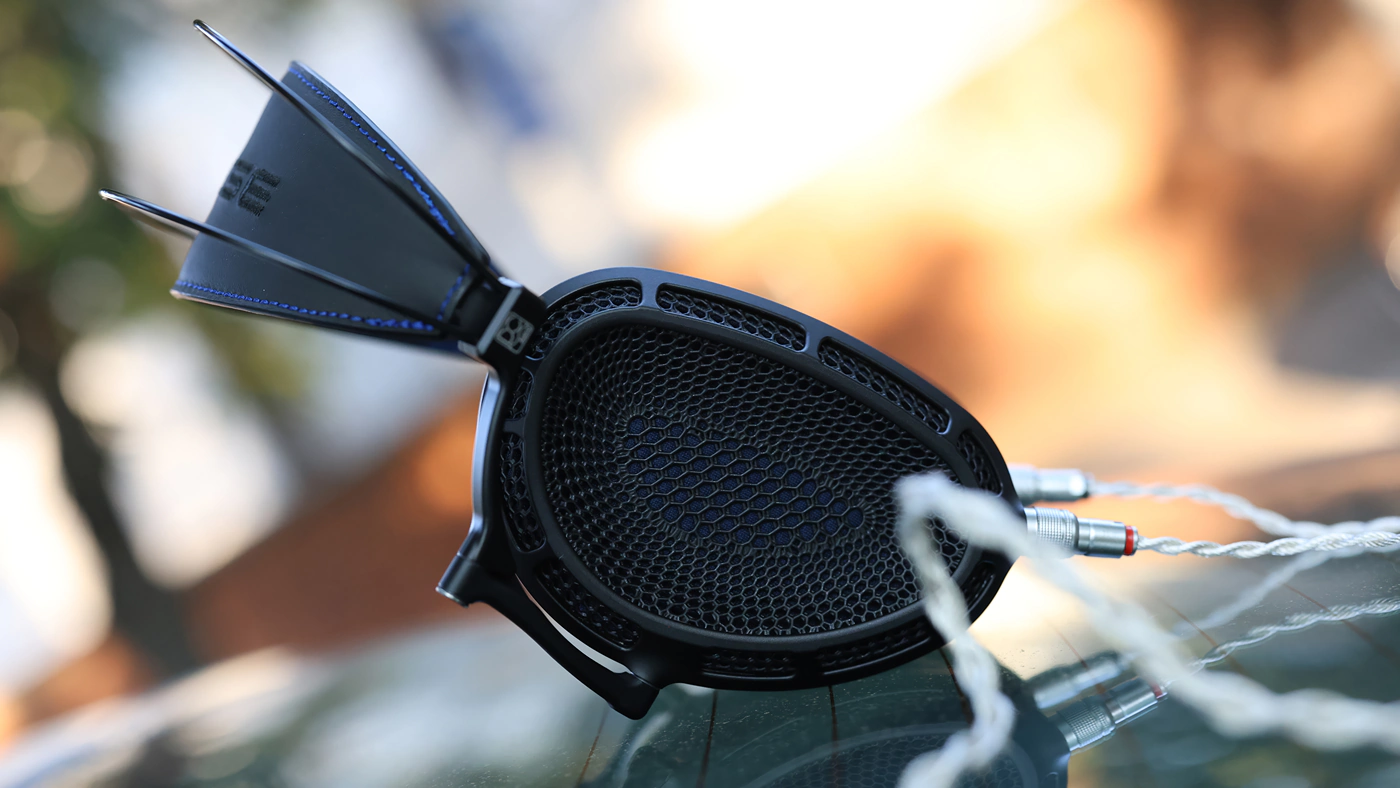
Dan Clark Audio Expanse vs HIFIMAN He1000SE (3999 USD vs 1999 USD)
Build – HiFiMan made the HE1000SE to be lighter than the Expanse, and also gave them a 3.5mm standard headphone connector, so it is easier to find aftermarket cables, while Expanse uses DCA’s connectors, but for the most part you can purchase an adaptor tail from most aftermarket vendors to adapt cables made for HE1000SE to the Expanse. There is a bit more space inside the earcups of the HE1000SE, but both headphones have more than enough real estate for my ears inside, while the headband and clamping force of the Expanse sit a bit tighter on my head, yet the weight I feel is comparable. It is harder to drive the HE1000SE properly, and although it requires less power and is easier to drive loud, it needs a better source to really shine, compared to the Expanse which needs more raw power but combines more easily with most sources. Expanse isolates a bit from the outside noise while HE1000SE really sounds like you’re not wearing headphones, but both leak equally, with He1000SE actually leaking a bit more to the outside, both thanks to the acoustically stealthy cups and magnets.
Sound – HE1000SE is generally a neutral – bright headphone with a strong and punchy sound, excellent resolution and a holographic, deep soundstage. When putting them head-to-head, Expanse sounds deeper, has more bass, more body and a slightly warmer sound, gives more depth and seriousness to male voices, while female voices sound a bit brighter, more emotional and more open, although the treble is far more relaxed as presented by the Expanse which sounds smooth and refined, while HE1000SE sounds raw, bright and sparkly, very open and bright. The soundstage of the HE1000SE is wider and more holographic, while the soundstage of the Expanse is more precise in creating a realistic size and direction for each instrument, and the texture is smoother, easier to enjoy for the Expanse, while HE1000SE is more critical of poor recordings, needing music that’s more carefully mixed and mastered to truly shine. While I enjoy rock and metal with both, Orchestral sounds superb with both headphones, but rap, EDM, Pop and bass-heavy music is more groovy as presented by the expanse, so they are easier to recommend for a versatile listening experience, if you want more bass.
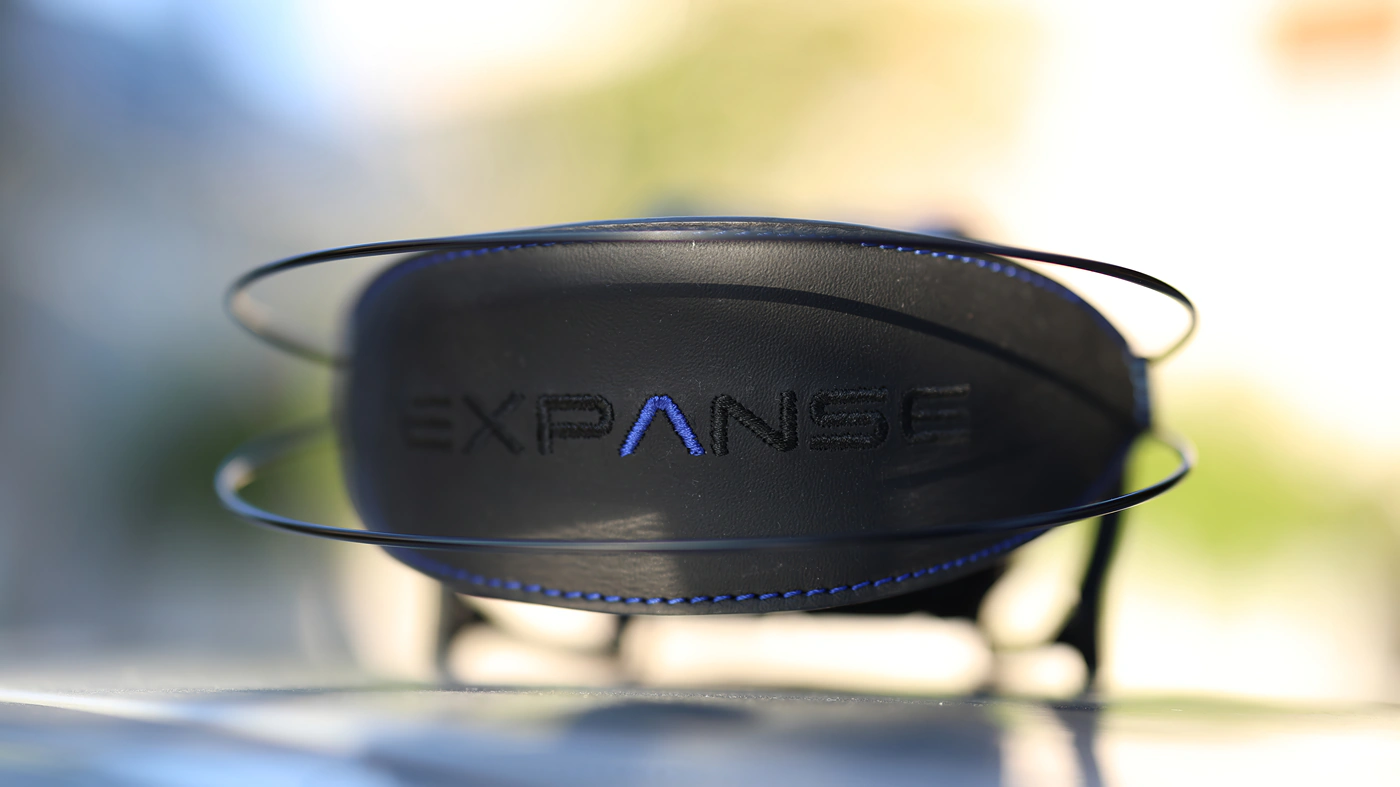
Dan Clark Audio Expanse vs Rosson RAD-0 (3999 USD vs 2600 USD)
Build – Constructionally, RAD-0 looks really beautiful in person, but they use a much heavier frame than the Expanse, feeling heavy both on my neck and on my head, while the headphone connectors are fairly proprietary for both, and I had an easier time finding and purchasing aftermarket cables for the expanse than for RAD-0. RAD-0 isolates a bit more from the outside noise, and requires much less power to be driven well, although they have a very colored sonic signature, so they require much more precise source matching to sound good, while Expanse needs more raw power, but sound much better with most sources, including those with low power.
Sound – RAD-0 is a smooth, lush and bassy sounding headphone, to the point where they have a much lower energy and less perceived resolution / clarity compared to the Expanse which sounds much more powerful, more natural and has a more emotional, natural and more crystalline rendering of female voices. RAD-0 is fun to take for a spin and explore how your music collection would sound like if it was very bassy, but for a natural, clean rendering of your music, Dan Clark Audio Expanse is a clear winner and creates a much more natural sound that I can enjoy for longer and with more music styles, both based on male and on female voices.
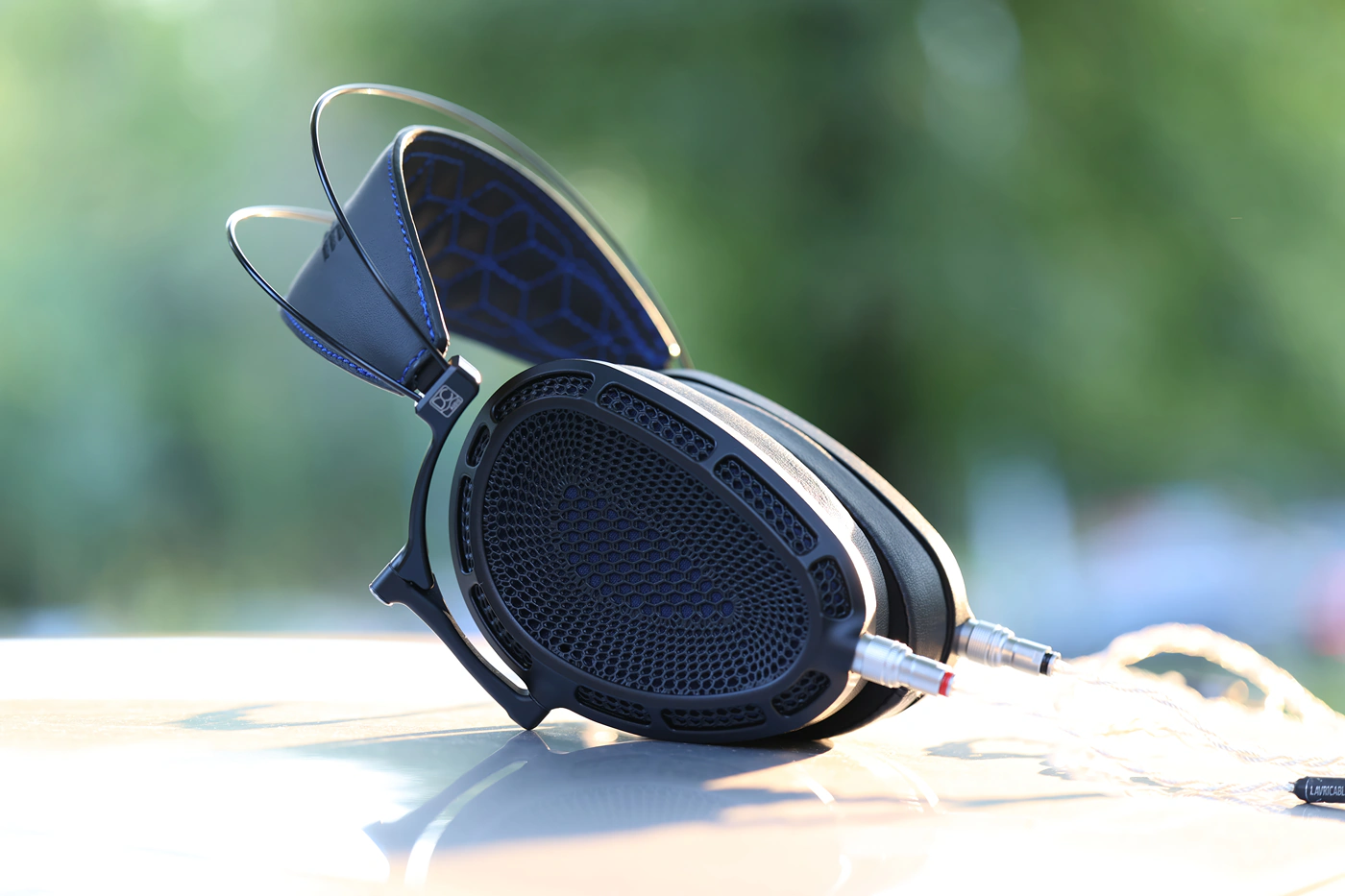
Dan Clark Audio Expanse vs Audeze LCD-5 (3999 USD vs 4500 USD)
Build – We got to the LCD-5, and this is literally one of my all-time favorite headphones for sound, but constructionally they are fairly heavy and tight on the head, having a really sturdy design and frame, but Dan Clark Audio Expanse feels much lighter, more ergonomic and sits better on my head, putting less pressure on my neck and shoulders for long periods of wear. It is harder to drive LCD-5, but they are impervious to the source and their signature / tuning is incredibly consistent regardless of what is powering them provided it has enough resolution and enough power, so with LCD-5, plenty of power is what they seek, and what they will react to, while Expanse also pairs well with most sources, but need less power and can be fine tuned with certain sources for a bassier or a brighter sound.
Sound – If there is one headphone you always thirst for when you first hear that is the LCD-5, you really keep wanting to hear it again, as it has a really high resolution and easily reveals information from albums, but this kind of sound gets fatiguing really fast if your collection is not properly mixed and mastering, and LCD-5 is the epitome of a perfect headphone for mixing and mastering, while Expanse sounds more musical, beefier, smoother and richer, and grows on your with every listen, so in the end, if you have both, you end up spending much more time with the Expanse thanks to its smoother, richer and more relaxed sound that emphasizes with all music, all styles and creates a beautifully melody out of everything, from western pop to J-Rock to Rap and EDM, while LCD-5 is a performer that is too honest at times, showing the good and the bad in music. The actual resolution is similar, but the sharper sound of the LCD-5 makes it a much brighter headphone with a more neutral bass, while Expanse has a deeper, more powerful bass with a smoother treble.
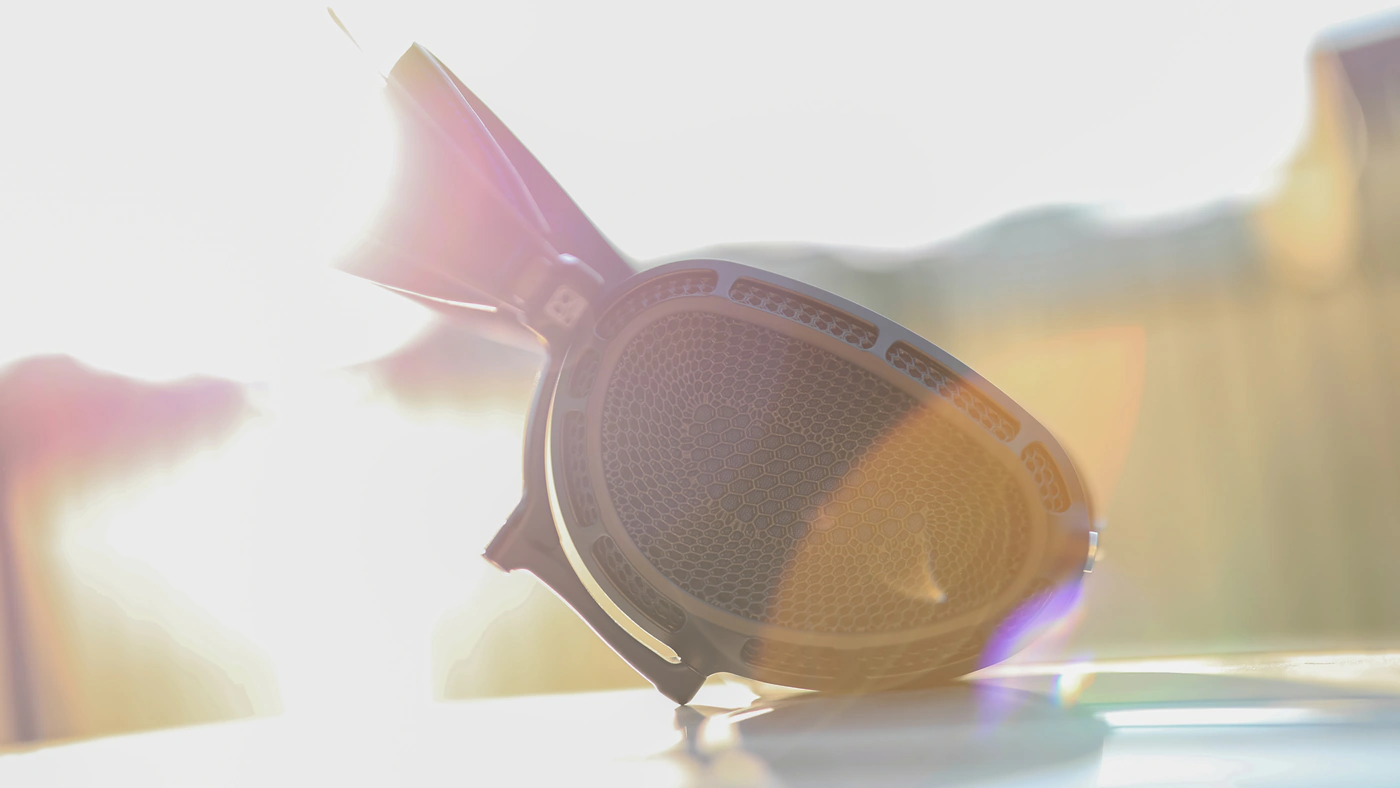
Dan Clark Audio Expanse vs Sivga Peacock (3999 USD vs 1500 USD)
Build – Peacock is a headphone designed to be as beautiful looking as possible, being a headphone that quickly attracts the attention of bystanders when you’re wearing it, but they also come with a proprietary cable like the Expanse, and Expanse is much easier to fold and transport while Peacock is hard to carry around. The real wood and metallic insertions of the Peacock make it less comfortable and it is far harder to achieve a good seal with it, while Expanse just clamps on your head with dense earpads and is comfortable right away. Peacock is much heavier, but it isolates a bit more from the outside noise, leaking less than the Expanse, but you can hear that it doesn’t have anything to solve out the standing waves, as quite literally you hear those in the sound. Peacock is easier to drive from a power perspective and requires less power, but is harder to match, having a mid-centric sound that rolls off at the deepest bass level and at the highest treble level, requiring a source that makes up for this. Expanse is easier to match, drive and has more design at the build level.
Sound – You might expect the Peacock to sound more colorful, due to their flashy design, but Expanse actually sounds more colorful, more natural and more balanced. Sivga Peacock is a very mid centric headphone with both a soft roll off and a hard roll off as you approach the sub bass and the high-end treble extremities. With rock and metal, Peacock sounds just beautiful, as metal and rock in general doesn’t have a lot of information in the sub bass, and can sound warmer, lusher when the treble is a bit rolled off to avoid harshness, but Expanse handles this much better. The deep-bass extension of the Expanse is a lot better than that of the Peacock, there’s much more impact and more bass in the sound of the Expanse, while the midrange emphasizes both male and female voices much better. The treble of the expanse is fatigue-free, smoother and lusher, which creates a more enjoyable sound by default, and while Sivga has a bit of a standing waves problem, a metallic tinge in the upper midrange / lower treble, that is not a n issue with the Exanse which always sounds refined and musical. The soundstage is much wider on the Expanse and Peacock is mid centric and pushes everything in your face.
Pairings
Dan Clark Audio DCA Expanse + HIFIMAN Prelude (3999 USD + 2499 USD) – Prelude is a heavy, wide and bassy sounding amplifier, so if you want to turn the Expanse in an Expanded BassHead Headphone Prelude is your best bet, as Prelude has an inherently low THD, you can pump up the volume more than with most amplifiers, and the high driving power combined with the excellent noise control makes Prelude one of the best sources to power up, beef the Expanse and create a deeper rumble combined with a wider soundstage and a smoother treble. This combo was powered by HIFIMAN Serenade for the DAC and it features the most brilliant combination of warmth, richness, lushness and smoothness you can achieve with the Expanse.
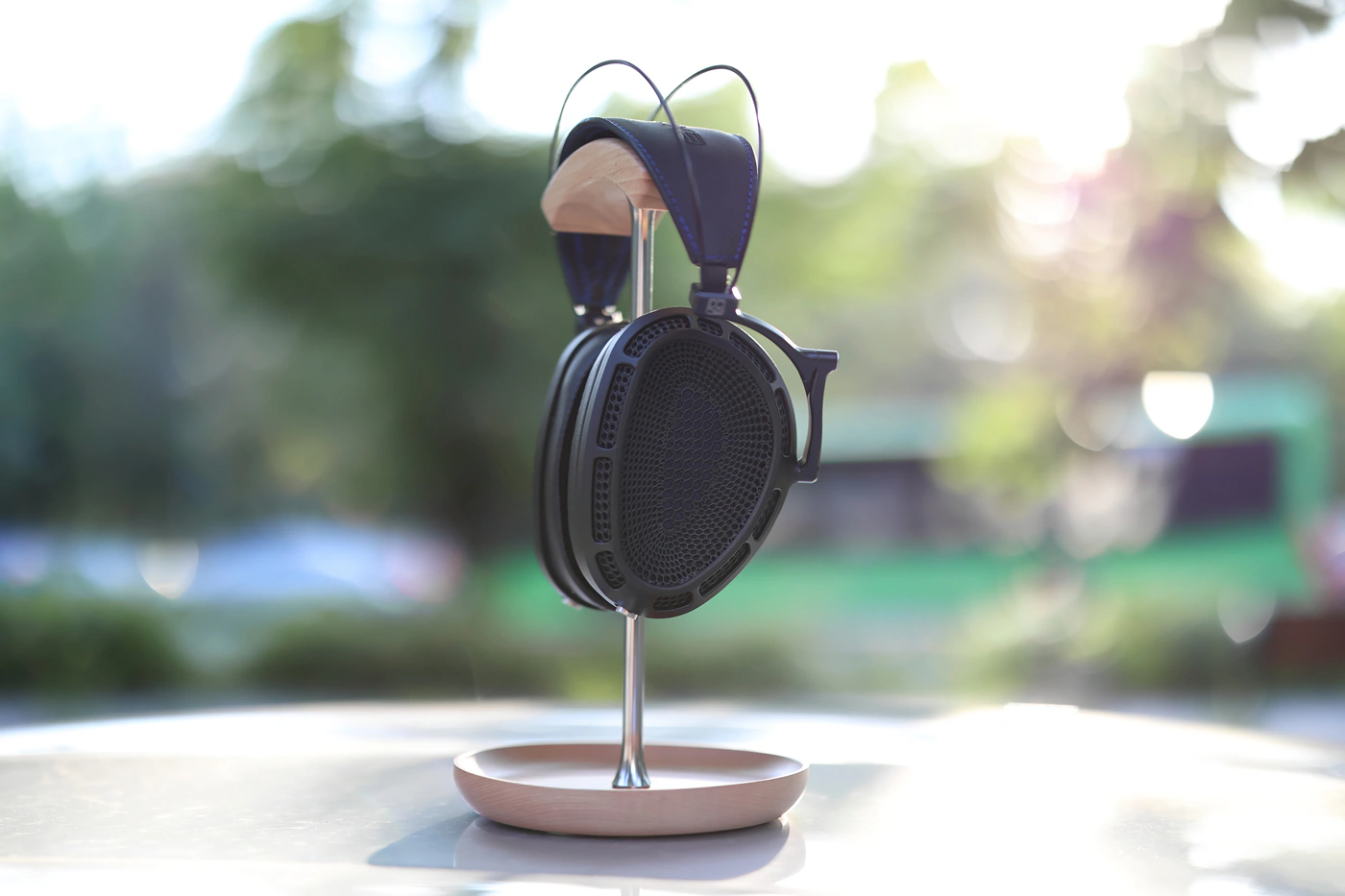
Dan Clark Audio DCA Expanse + iBasso PB5 (3999 USD + 1499 USD) – With PB5 having a great sound, I couldn’t have missed adding it to the pairings roster, but it also needs a DAC, and here I have used the iBasso D16 as the DAC for the combo. PB5 is what I consider the most reference signature and tuning for the Expanse, it gives them the most colorful midrange, but powerful and bloomy bass, paired with a natural and transparent midrange. As PB5 is a NuTube amplifier, it creates the feeling of a natural, even sound, slightly soft in textures, but colorful and vivid, while Expanse still hits hard and deep, sounding controlled and pleasing as it is driven by it. As most of the review has been written while I was driving the Expanse with the D16 + PB5 Combo, I recommend exploring this combination the most, as it created the most reference sound for my ears.
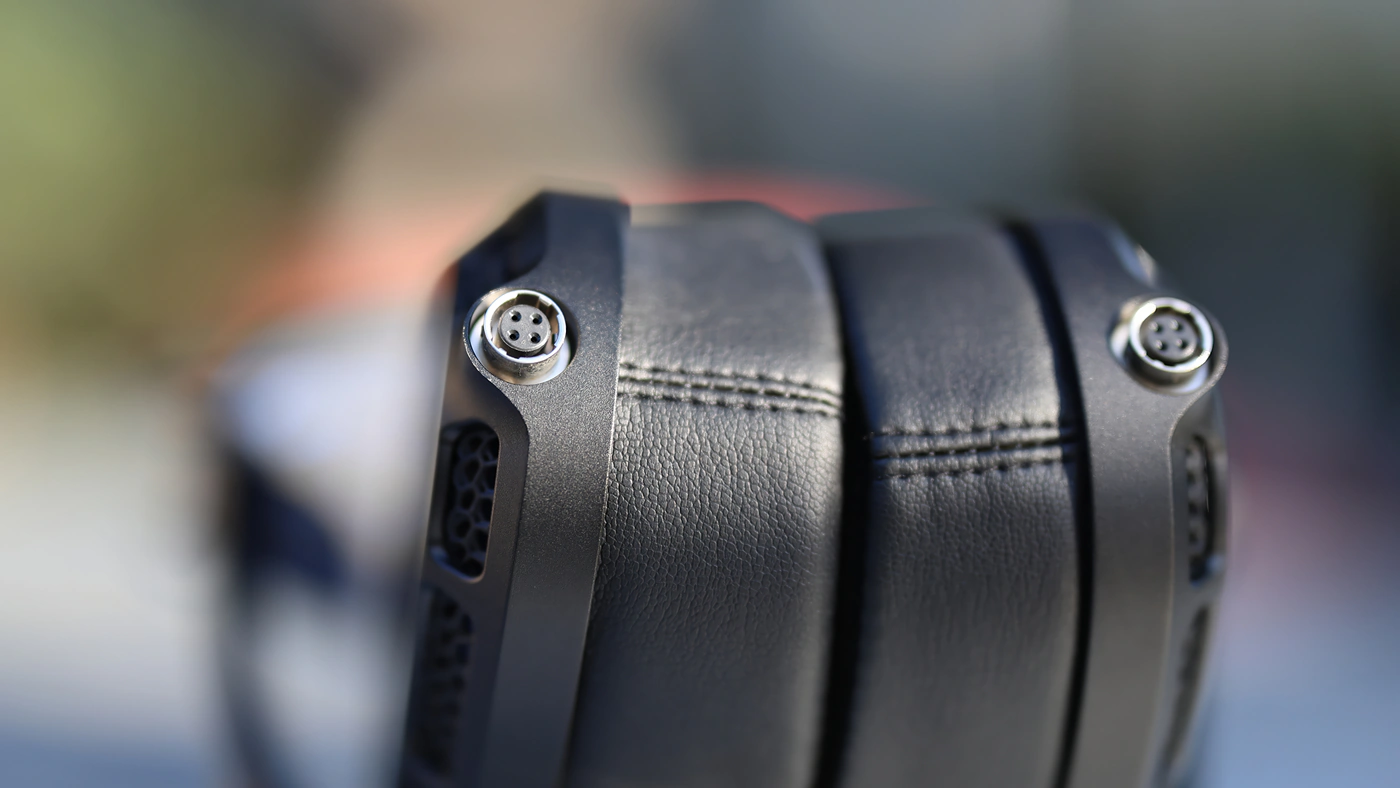
Dan Clark Audio DCA Expanse + Dethonray Listening M1 (3999 USD + 2599 USD) – Dethonray might just as well have created the most convenient way to drive the Dan Clark Audio Expanse, especially thanks to the small form factor of their DAC / AMP, as with a setup like the prelude, you also need a DAC like the Serenade, and the whole thing will conquer your desk and require a lot of space, whilst Listening M1 is small, but powerful, warm, smooth but punchy and hard-hitting. While most sources try to sound as gentle, refined and non-aggressive as possible listening M1 creates a strong, almost viscous impact with the Expanse, having a really powerful and deep-hitting bass rumble, a wealth of warmth and richness in the midrange and a smooth, relaxed treble with an excellent resolution but fluid textures. Listening M1 has more than enough power on tap for any pair of headphones, and always will have the form factor convenience for a desktop setup, being both a DAC and an AMP.
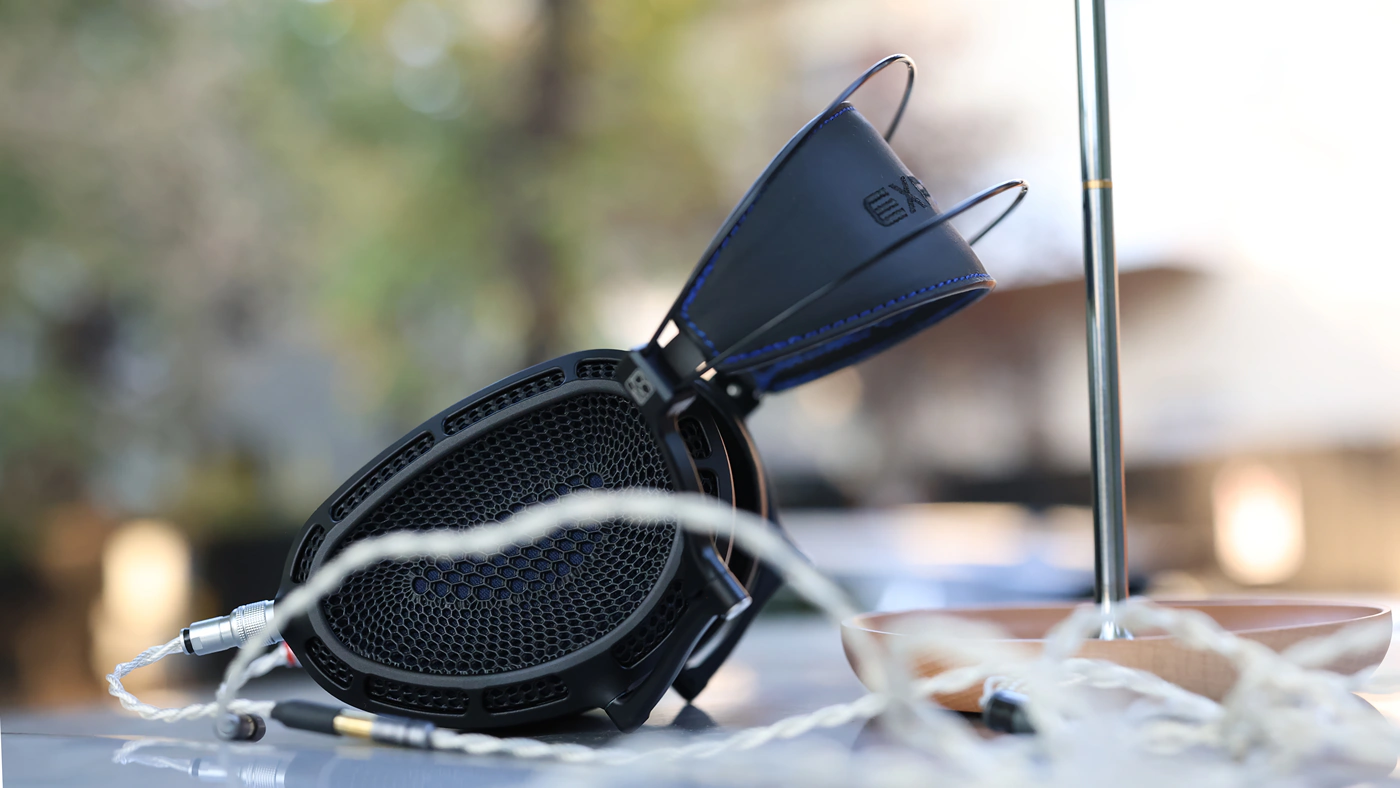
Dan Clark Audio DCA Expanse + Feliks Audio Euforia Evo (3999 USD + 2991 USD) – Euforia Evo is a great amplifier to drive the Expanse, and for this test I have been using the Musician Pegasus R2R DAC as the digital source, with Euforia giving the Expanse one of the most colorful, most vivid midrange presentations out of all the AMPs out there. The bass is more neutral though, with less force and less presence, creating a lighter, airier sound with more extension and energy in the treble, but a less hard, more fluid, gentler sound in the midrange as well. Expanse really likes tube AMPs, and can work well with them, if you prefer a less bassy sound, as otherwise most amplifiers will give Expanse a beefier, warmer sound with more bass, Euforia being one of the most neutral, smoothest and cleanest pairings with the Expanse.
Value and Conclusion
While it is always hard to argue that a flagship product has a strong value, Dan Clark Audio Expanse has excellent value, it delivers a stunning performance, and an energetic, lively sound with outstanding resolution, and a comfortable listening experience, so despite the high price tag, it will reliably offer an excellent performance and the built quality DCA is known for, so it is a flagship but with excellent value for a flagship, allowing you to even customize the cable you’re purchasing the Expanse with.

Before the end of today’s review, I will be adding the DCA Dan Clark Audio Expanse to the Audiophile-Heaven Hall Of Fame for their excellent build quality, extreme resolution and low distortion, along with the impactful bass and the outstanding musicality and low THD offered. As a headphone, this is end-game material and for many people will be the final headphone they need for the rest of their lives.
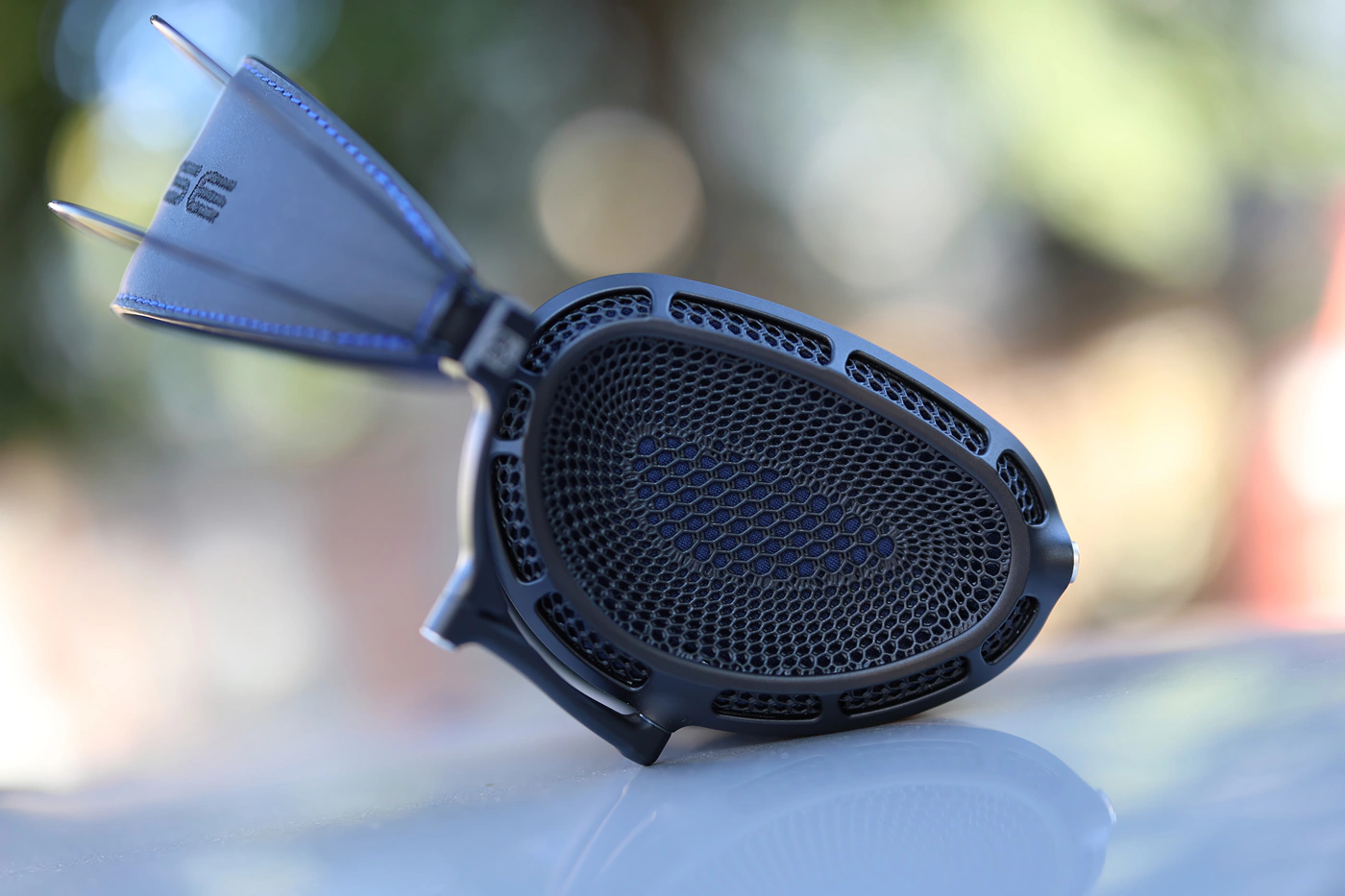
At the end of the day, it is not often that I use such heavy words, but Dan Clark Audio Expanse brings me an emotional moment where I can finally call a product end-game material, not just a good headphone, but an excellent one, with sonic that you will never grow tired of, bored of, but neither fatigued by, the transparency, energy and strength DCA Expanse offers has not seen before, and music listened through headphones like those is a big part of why I started reviewing and why I keep exploring new products. If you’re curious what true flagship-level music sounds like, you ought to give Dan Clark Audio a try, it is a headphone that will always success to impress every listener.
Product Link
Official store Link – https://danclarkaudio.com/expanse.html
--- Please remember to stay safe, and always have fun while listening to music!---
- If you have a dime to spare, please donate, and help us! It would make the day brighter for me and my wife-
Full Playlist used for this review
We listened to more songs than those named in this playlist, but those are excellent for identifying a sonic signature. I recommend trying most of the songs from this playlist, especially if you’re searching for new music! The playlists are different for Spotify, Tidal and Youtube, and based on the songs I enjoy and are available on each!
https://www.youtube.com/playlist?list=PL_cjBXGmwSHSdGcwuc_bKbBDGHL4QvYBu
https://open.spotify.com/playlist/5J3oloz8Riy9LxEGenOjQ0?si=979ba4f082414be7
https://tidal.com/browse/playlist/330fd544-8e5b-4839-bd35-676b2edbb3d5
--- Contact Us ---





